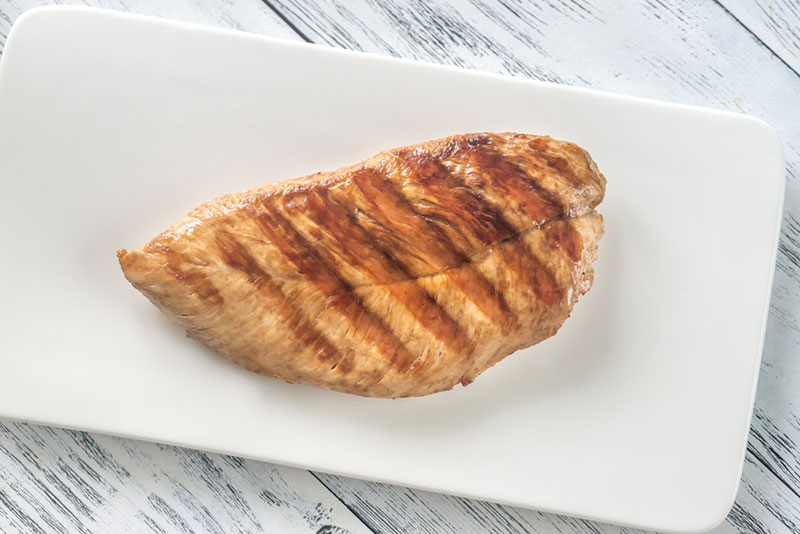6 Foods High in Potassium for Cats (Vet Answer)
Updated on

A balanced diet is essential for your cat’s health. When considering a diet well-balanced in nutrients, we often think of proteins, fats, and carbohydrates, yet many vitamins and minerals are also critical. For example, potassium is an essential nutrient for the body.
In this article, we’ll look at the importance of potassium, what potassium deficiency looks like in cats, and what foods are rich in potassium for cats.
What Is Potassium? Why Do Cats Need Potassium?
Potassium is an essential electrolyte that supports a body’s normal functions, including nerve and muscle activity.
Potassium is an essential electrolyte for many species, including humans as well as cats. Potassium plays several critical roles in a cat’s body, including electrolyte balance, nerve and muscle function, and proper kidney function. When the potassium blood concentration is too low in cats (called hypokalemia), a cat can become very weak and even develop dangerous heart problems.
Low potassium, or hypokalemia, can occur in cats who are sick with a disease that is causing fluid loss, such as chronic kidney disease or gastrointestinal disease. Other conditions that can cause hypokalemia can include diabetes, severe dietary deficiency, prolonged vomiting and diarrhea or prolonged anorexia, some cancers, and certain medications.

What Does a Potassium Deficiency Look Like?
When the blood concentration of potassium is too low, the condition is called hypokalemia. When a cat’s potassium is too low, it can cause various clinical signs, such as lethargy and weakness. A classic sign is a cat hanging its head low, looking like it is too tired to hold its head upright.
- Weakness and fatigue
- Muscle weakness and cramps
- Poor coordination (inability to stand and walk normally)
- Vomiting or diarrhea
- Increased water consumption and urination
- Poor appetite
- Weight loss
- Abnormal heart rhythm and other cardiac issues
- Difficulty breathing
- Poor growth
- Poor hair coat
The 6 Potassium-Rich Foods
Incorporating potassium-rich foods into your cat’s diet is a helpful way to be sure they receive adequate amounts of potassium. Below are six potassium-rich foods that are considered cat-friendly:
1. Fish

Some fish, such as salmon and tuna, provide a good source of potassium for cats. In addition to being very tasty for cats, these fish are also good sources of omega-3 fatty acids which are also healthy nutrients for a cat’s body.
2. Chicken

Chicken is a lean protein source with a good amount of potassium. When feeding your cat chicken, offering only plain chicken meat without any skin, bones, salt, or other seasonings is important.
3. Lean Meats

Lean meat such as lamb, duck, and turkey are all options that offer a fair amount of potassium. As with chicken, it is important not to feed your cat raw meat, cooked bones, or meat with additional salt or seasonings.
4. Pumpkin

Certain vegetables such as pumpkin/squash are high in potassium. In small amounts, these foods can be a helpful addition to your cat’s diet.
5. Bananas

Not all fruits are safe for cats, but bananas, in small amounts, are considered cat-friendly and are rich in potassium.
6. Kidney Prescription Diet

Most cats with kidney problems develop potassium deficiency as well. A special veterinary diet formulated for cats with kidney problems can serve as an appropriate source of potassium.
Final Thoughts
Not all foods rich in potassium and healthy for humans are considered safe for cats. When considering offering new foods to your cat, it is best to consult your veterinarian to be sure they are safe and in what quantities. It is especially important to consult your veterinarian on dietary changes if your cat has been diagnosed with a chronic illness such as chronic kidney disease or inflammatory bowel syndrome, as these cats often have special dietary requirements.
In some cases, if your cat is experiencing hypokalemia, your veterinarian may make a recommendation to provide your cat with a potassium supplement to maintain a healthy electrolyte balance for your furry friend.
Featured Image Credit: Clari Massimiliano, Shutterstock










